Kyoto Subway Guide: Route Map, Tickets, and Points of Interest

Kyoto's subway system consists of two lines: the Karasuma Line and the Tozai Line. We introduce the main Kyoto attractions that can be easily reached by subway, along with discount tickets, how to efficiently combine traveling by subway and bus, and other tips.
Kyoto City Subway Guide
Kyoto City Subway: Route Map and Lines
Other Railway Lines Serving Kyoto City
Kyoto Subway Fares
Cost-Efficient One-Day Passes for Kyoto Subway
Points of Interest along the Karasuma Line
1. Kyoto Station: Kyoto Tower, Kyoto Railway Museum, Kyoto Aquarium
2. Gojo Station: Higashi Honganji Temple, Shoseien Garden
3. Karasuma Station: Shijo Street, Nishiki Market
4. Imadegawa Station: Kyoto Gyoen National Garden, Shokokuji Temple
5. Kitayama Station: Kyoto Botanical Gardens
Points of Interest along the Tozai Line
6. Uzumasa Tenjingawa Station: Toei Kyoto Studio Park
7. Nijojo-mae Station: Nijo Castle
8. Kyoto Shiyakusho-mae Station: Teramachi Shopping Arcade/Honno-ji Temple
9. Higashiyama Station: Heian Shrine, Okazaki Shrine
10. Keage Station: Nanzen-ji Temple, Eikando Temple
11. Daigo Station: Daigo-ji Temple
Points of Interest Reachable via Subway Continuation
12. Karasuma Line Connects to the Rail to Nara
13. Tozai Line Connects to the Keihan Keishin Line to Otsu and Lake Biwa
Kyoto City Subway: Route Map and Lines

Picture courtesy of Kyoto Area Route Map
The Kyoto City Subway consists of two main lines that intersect at Karasuma Oike Station:
- Karasuma Line: This line runs north-south through Kyoto, connecting major attractions such as Kyoto Station, Shijo Street, Karasuma Oike, and Kokusaikaikan. It is a convenient line for accessing central areas of the city.
- Tozai Line: Running east-west, the Tozai Line connects areas like Daigo, Higashiyama, and Nijo Castle. This line provides access to important historical sites and cultural landmarks.
These two lines offer convenient and efficient transportation within Kyoto, making it easier for both locals and tourists to access key points of interest in the city. For a detailed route map, refer to the English version map.
Other Railway Lines in Kyoto City
Additionally, in the Kyoto City area, there are two other important railway lines: the Hankyu Railway Kyoto Line, which passes through four areas, and the Keihan Electric Railway Keihan Main Line, following the path along the Kamo River.
The Hankyu Railway Kyoto Line extends southwest to Katsura and Nagaoka Tenjin Station, connecting to Arashiyama. The Keihan Main Line extends north to link up with the Eizan Electric Railway towards Kurama, and south to Fushimi Inari.
This article will mainly concentrate on presenting the attractions along the Kyoto City Subway.
Kyoto Subway Fares
The adult fare for a single zone (within 3 kilometers) is 220 yen, while for the farthest five zones (over 15 kilometers), it is 360 yen. Children aged 6 and above but under 12 years old pay half price, and infants under 6 years old travel for free (maximum of 2 infants per adult). IC cards such as ICOCA, Suica, Welcome Suica, PASMO, etc., are accepted.
*Children: 6 years old and above but under 12 years old. Infants: Under 6 years old.
Cost-Efficient One-Day Passes for Kyoto Subway
| Type | Adult Fare | Child Fare | Purchase Location |
| Subway One-Day Pass | 800 yen | 400 yen | Kyoto Subway station counters or ticket vending machines |
| Subway and Bus One-Day Pass | 1,100 yen | 550 yen | Subway station counters, city bus and subway information counters, convenience stores, tourist information centers, and monthly pass purchase points |
*Children: 6 years old and above but under 12 years old.
Subway One-Day Pass: Includes discounted admission to tourist facilities such as Nijo Castle, Kyoto Municipal Zoo, Toei Kyoto Studio Park, and Kyoto Botanical Gardens on the day of use.
Subway and Bus One-Day Pass: For information on discounted facilities covered by this pass, please visit the official website:
https://oneday-pass.kyoto/?lang=en
1. Kyoto Station: Kyoto Tower, Kyoto Railway Museum, Kyoto Aquarium
Kyoto Station and Kyoto Tower
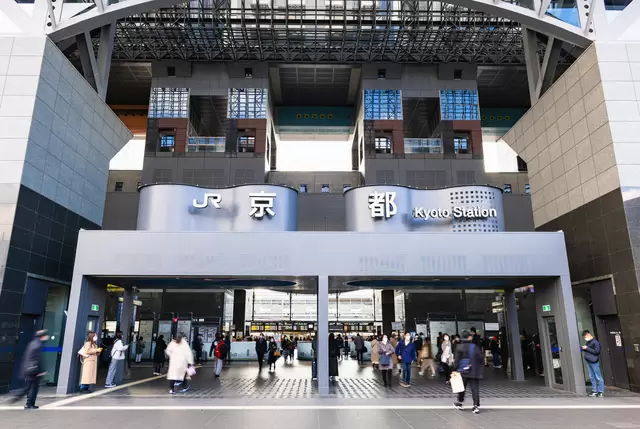
On the second floor of Kyoto Station, the Kyo-NAVI Kyoto Tourist Information Center is often the first stop for many travelers arriving in Kyoto. Stop here first to pick up travel pamphlets and get information on temporary exhibitions or events.
Kyoto Station is directly connected to shopping malls like JR Kyoto Isetan, Kyoto Tower Sando, Kyoto Porta, and the Kintetsu Meitetsu Street MIYAKOMICHI, which feature numerous restaurants and stores.
Especially noteworthy is the souvenir area on the ground floor of JR Kyoto Isetan, offering a wide selection of Kyoto-themed gifts.
The observatory of Nidec Kyoto Tower offers panoramic views of Kyoto City and its surroundings so we highly recommend it.
Kyoto Railway Museum

The Kyoto Railway Museum can be reached after a 20-minute walk westward from the Central Exit of Kyoto Station. Alongside displaying Japan's rich railway history and diverse collection of train vehicles, the museum offers interactive exhibits for visitors to engage with directly.
A key attraction for railway enthusiasts is the outdoor roundhouse, where an impressive lineup of train cars awaits. What sets this museum apart is the opportunity to ride a steam train (SL), an experience not commonly found in other railway museums.
Kyoto Railway Museum
Address: Gokomachi, Shimogyo ward, Kyoto, Kyoto Prefecture
Website: https://www.kyotorailwaymuseum.jp/en/
Kyoto Aquarium
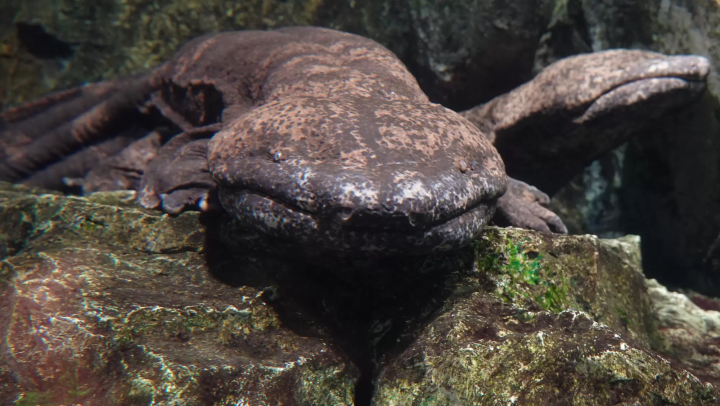
Picture courtesy of pixta
Next to the Railway Museum is the Kyoto Aquarium, divided into three main sections: Rivers of Kyoto, Sea of Kyoto, and The Mountainside of Kyoto.
In the Rivers of Kyoto exhibit, visitors can get up close to the ecology of the Japanese Giant Salamander, the world's largest amphibian and a Special Natural Monument of Japan, which is a highlight of the aquarium. Additionally, there are popular marine animals such as seals, penguins, and dolphins that both kids and adults enjoy.
Kyoto Aquarium
Address: 35-1 Kanki-ji-cho, Shimogyo ward, Kyoto
Website: https://www.kyoto-aquarium.com/en/index.html
2. Gojo Station: Higashi Honganji Temple, Shoseien Garden
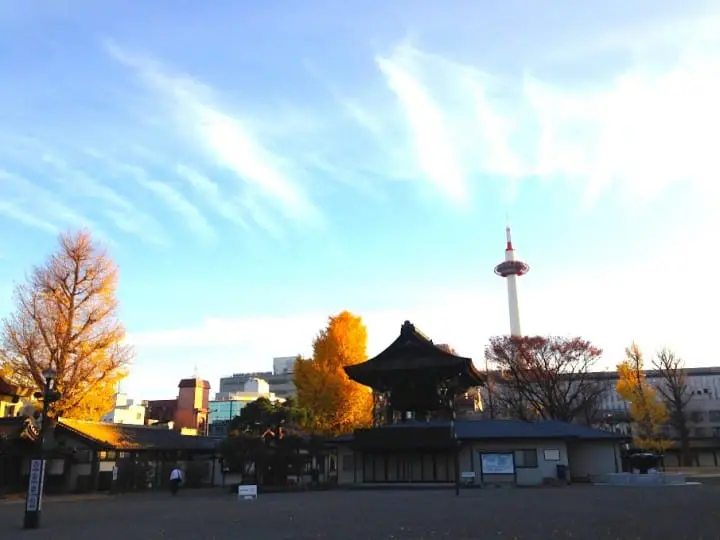
Higashi Honganji Temple was established by shogun Tokugawa Ieyasu (1543-1616). Within its premises, many of the wooden structures are either the largest in the world or the tallest in Japan.
Located near Gojo Station on the subway, it is also not far from Kyoto Station, making it a popular destination for many visitors to Kyoto. The nearby Shoseien garden is designated as a national scenic spot, and during autumn, the fiery red maple leaves enhance the beauty of the garden.
Higashi Honganji Temple
Address: Kawaramachi-dori, Shichijo-agaru, Shimogyo ward, Kyoto
Website: https://www.higashihonganji.or.jp/
3. Karasuma Station: Shijo Street, Nishiki Market
Exiting at Karasuma Station leads you to the bustling and vibrant Shijo Street, where department stores, restaurants, souvenir shops, and more line the streets. Whether you're looking to shop or dine, you can find it all near Karasuma Station.
The renowned Nishiki Market, known as the "Kitchen of Kyoto," is also in the vicinity of Karasuma Station. Additionally, several covered shopping arcades connect to create a highly enjoyable shopping district nearby. By taking a bus, you can easily reach Yasaka Shrine. During the Gion Festival in July, many of the floats' bases are also located near Karasuma Station.
Daimaru Kyoto Department Store on Shijo Street

Daimaru Kyoto Store, located near Karasuma Station, offers more than just luxury brands, cosmetics, and souvenirs. Its underground fresh food section boasts a rich and delicious variety of items, often discounted towards closing time.
Currently, they are also providing exclusive coupons for tax-free shopping, a 5% discount, and food vouchers!
Tax-free + 5% discount coupon at Daimaru Matsuzakaya Department Stores
Daimaru Kyoto Store
Address: 79 Takakura Nishiiri Tatsumae-cho, Shimogyo ward, Kyoto, Kyoto Prefecture
Website: https://www.daimaru.co.jp/kyoto/
Nishiki Market
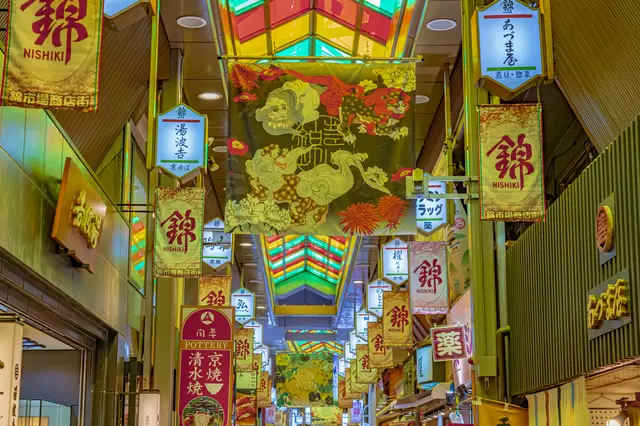
Picture courtesy of Pixta
If you want to delve deep into Kyoto's culinary culture, a visit to the renowned Nishiki Market is a must. This market, often called "Kyoto's Kitchen," is packed with bustling stalls in narrow alleyways, creating a lively atmosphere.
It attracts many visitors eager to sample local delicacies such as tofu, pickles, and other Kyoto snacks.
4. Imadegawa Station: Kyoto Gyoen National Garden, Shokokuji Temple
Kyoto Gyoen National Garden
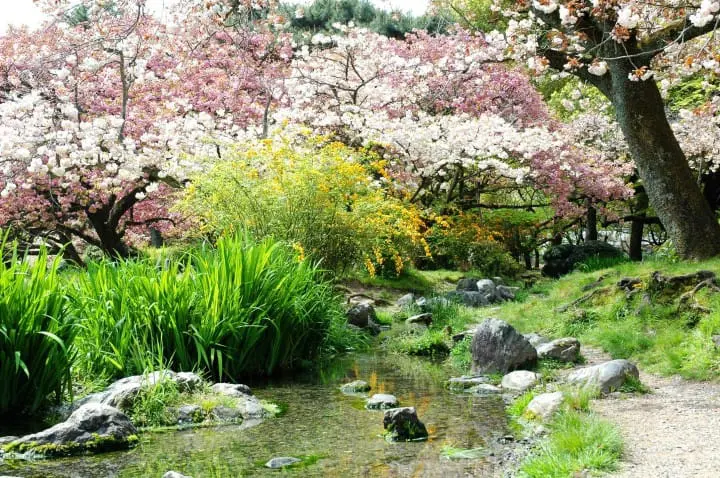
Picture courtesy of The Ministry of the Environment Kyoto Imperial Palace Management Office
The Kyoto Gyoen National Garden, centered around the former Imperial Palace of Kyoto, serve as a national park in the heart of Kyoto city and is open for free public visits.
Within the gardens, the Kyoto Imperial Palace is occasionally open for free tours during specific hours, providing a rare opportunity to learn about the imperial history of Japan. The entire garden boasts approximately 1,000 cherry blossom trees, making it a well-known spot for cherry blossom viewing.
Kyoto Gyoen National Garden
Address: Kyoto Imperial Palace Gardens, Kamigyo-ku, Kyoto, Kyoto City
Website: http://fng.or.jp/kyoto/
Shokokuji Temple

Picture courtesy of pixta
One of Kyoto's five major temple, Shokokuji Temple was founded during the Muromachi period (1333-1572) and belongs to the Rinzai Zen School along with the renowned Kinkakuji (Golden Pavilion) and Ginkakuji Temples.
Despite enduring several fires over the centuries, the current main hall was reconstructed in 1605 and is said to be the oldest existing main temple hall building in Japan.
Shokokuji Temple
Address: Kyoto City, Kamigyo-ku, Imadegawa-dori Karasuma Higashi
Website: https://www.shokoku-ji.jp/
5. Kitayama Station: Kyoto Botanical Gardens

Picture courtesy of Kyoto Botanical Gardens
The Kyoto Botanical Gardens boasts a wide variety of plant species, with over 12,000 types, making it a diverse botanical haven to explore throughout the four seasons.
Although the overall number of cherry blossom trees is not extensive, the diversity of species means that the cherry blossom viewing season in spring is exceptionally long, making it a hidden gem for locals in Kyoto. The garden's greenhouse houses 4,500 plant species, making it the largest botanical greenhouse in Japan.
Kyoto Botanical Gardens
Address: Sakyo ward, Shimogamo Hangicho, Kyoto, Kyoto Prefecture
Website: http://www.pref.kyoto.jp/plant/
6. Uzumasa Tenjingawa Station: Toei Kyoto Studio Park
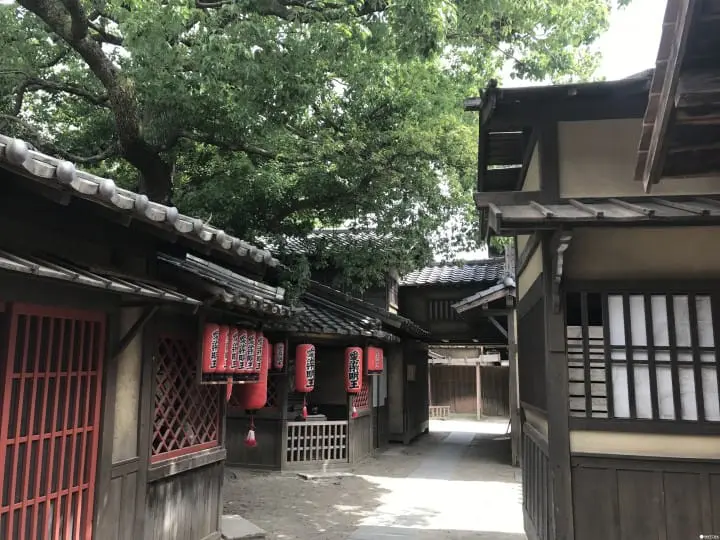
Opened in late 1975, the Toei Kyoto Studio Park replicates street scenes from the Edo, Meiji, and Taisho periods frequently seen in TV shows and advertisements.
While it serves as a film production site for Toei, the park is also open to the public for exploration and leisure. Visitors may even have the chance to witness film crews setting up shooting locations, offering a close-up look at the secrets of movie production.
Toei Kyoto Studio Park
Address: 10 Uzumasa Higashihachioka-cho, Ukyo ward, Kyoto, Kyoto Prefecture
Website:https://global.toei-eigamura.com/
7. Nijojo-mae Station: Nijo Castle
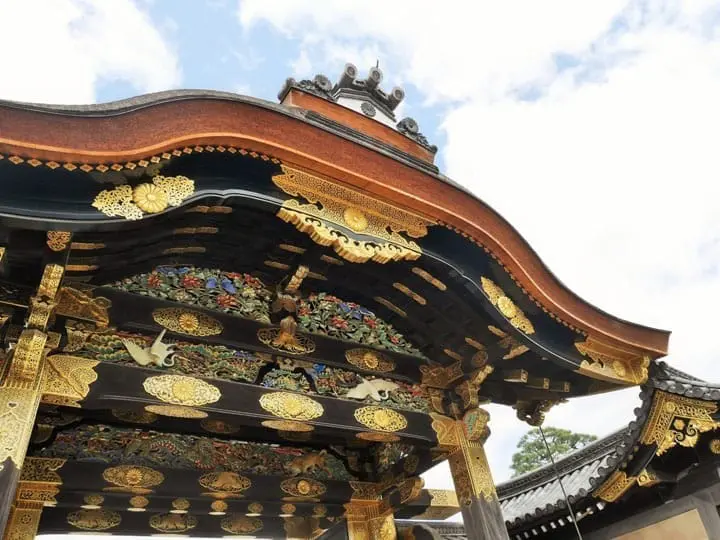
Located in Kyoto, Nijo Castle bears witness to the rise and fall of the Tokugawa shogunate. This is where Tokugawa Ieyasu was granted the title of "great shogun," marking the end of the warring states period.
Originally designed in the style of an Imperial Palace, Nijo Castle is richly adorned, with the Karamon gate facing the Ninomaru Palace being particularly exquisite. The Ninomaru Palace, designated as a national treasure, sprawls extensively, showcasing intricate carvings and paintings that exude unparalleled grandeur.
Nijo Castle
Address: 541 Nijojo-cho, Nijo-dori, Horikawa Nishi-iru, Nakagyo ward, Kyoto
Website: https://nijo-jocastle.city.kyoto.lg.jp/?lang=en
8. Kyoto City Hall Station: Teramachi Shopping Arcade and Honnoji Temple
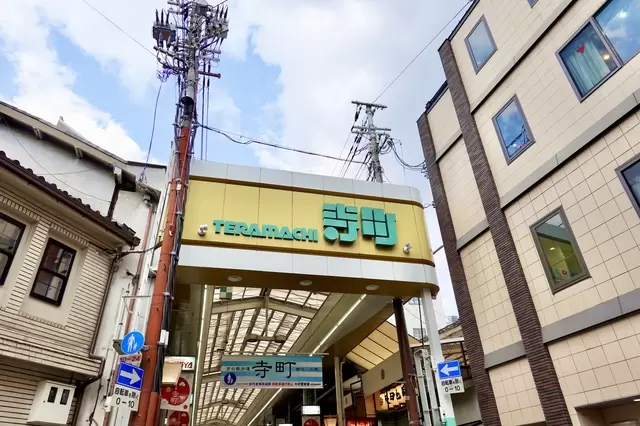
Picture courtesy of Pixta
Teramachi Shopping Arcade is located on Teramachi Street between Oike-dori and Sanjo-dori in Kyoto. It is characterized by many local shops, brimming with a sense of local lifestyle.
Connected to the bustling Shinkyogoku Shopping Street, a walk along this arcade will lead you to Shijo Street. The well-known Honnoji Temple main gate is also situated on this shopping street.
9. Higashiyama Station: Heian Jingu Shrine, Okazaki Shrine
Heian Jingu Shrine
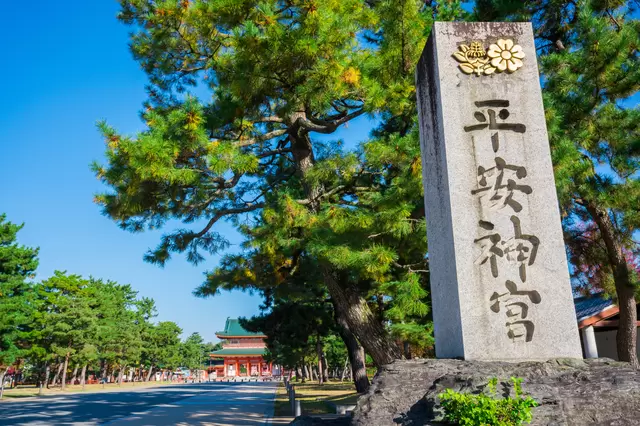
The Heian Jingu Shrine was established in 1895 to commemorate 1,100 years since Kyoto had become the nation's capital. Among Kyoto's many historically rich shrines, this shrine is considered relatively new.
The main hall replicates the grand structures of the Heian period (794-1185), including the Shinenkan, Daigokuden, and other buildings, allowing visitors to experience the solemn atmosphere of that era.
The shrine's Shin'en Garden features a variety of plants that bloom differently with each season, making it a beloved garden among Kyoto locals. The large square in front of the Heian Jingu Shrine is part of Okazaki Park, where weekend markets are often held. Visitors can enjoy treasure hunting at these markets.
Heian Jingu Shrine
Address: 97 Okazaki Nishitenno-cho, Sakyo ward, Kyoto City
Website: https://www.heianjingu.or.jp/index.html
Okazaki Shrine
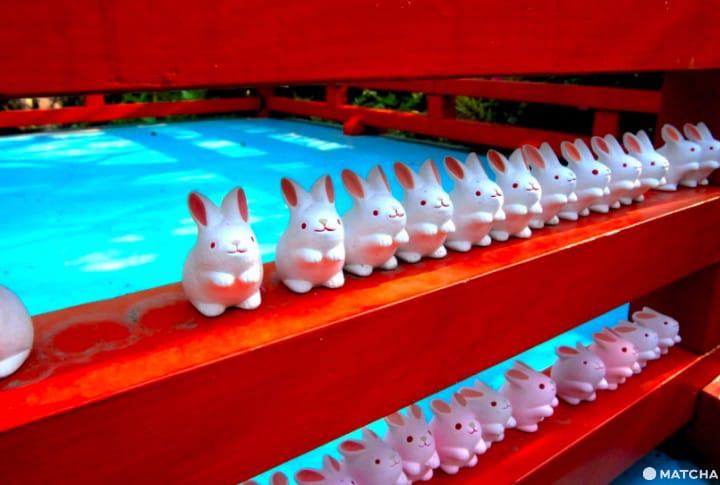
Okazaki Shrine was established so that its deities protect the capital by safeguarding the eastern direction (symbolized by the Rabbit in Chinese astrology).
The divine messengers for the deities at this shrine are rabbits, so it is revered today for protection against evil and for safe childbirth. Rows of rabbit-shaped poetry fortune charms make for a charming and popular photo spot.
Okazaki Shrine
Address: 51 Okazaki Higashitenno-cho, Sakyo ward, Kyoto
Website: https://okazakijinja.jp/
10. Keage Station: Nanzenji Temple, Eikando Temple
Nanzenji Temple
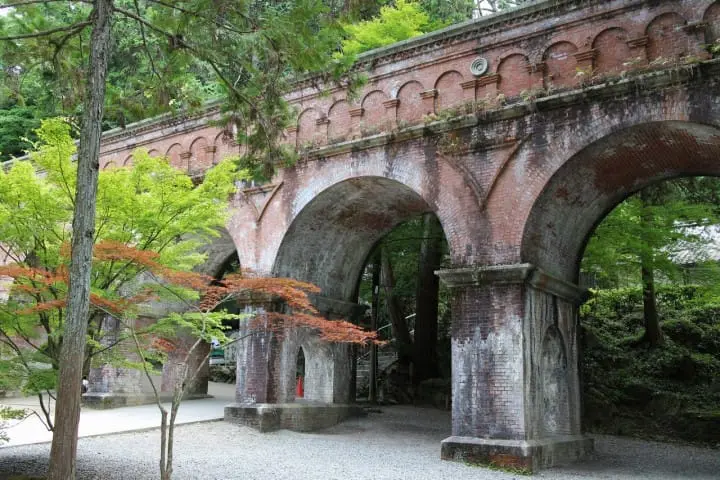
Located on the eastern side of Kyoto, Nanzenji Temple is one of Japan's highest-ranked Zen temples. The temple features preserved aqueducts for Lake Biwa's water supply. The red brick aqueducts against the summer greenery create a vibrant contrast, while the autumn foliage offers a picturesque scene.
Nanzenji Temple
Address: Nanzenji Fukuchicho, Sakyo-ku, Kyoto
Website:https://www.nanzenji.or.jp/
Eikando Temple

Picture courtesy of Eikando Temple
Established in the early Heian period, Eikando Temple is renowned for its statue of the "Amitabha Looking Back."
The temple is famous for its various maple tree species, which in autumn transform the temple into a vivid canvas of red hues reflecting off the Hojo Pond, creating a picturesque scene.
Eikando Temple
Address: 48 Eikandocho, Sakyo ward, Kyoto
Website: http://www.eikando.or.jp/
Read also
11. Daigo Station: Daigoji Temple
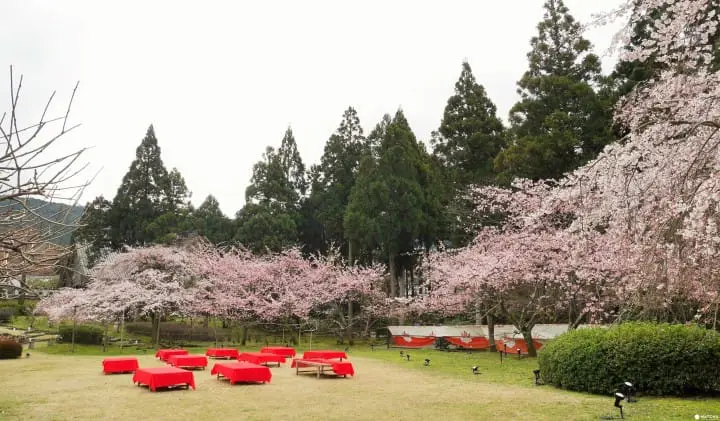
Established in 873, Daigoji Temple is a designated UNESCO World Heritage Site. It is divided into Upper Daigo (Shimo-Daigo) on the mountain top and Lower Daigo (Shimo-Daigo) at its base, featuring national treasures like the five-story pagoda and historically significant structures like the Golden Hall.
The temple grounds host over 700 cherry blossom trees, earning Daigoji the reputation of "flower temple" since the Heian period, even capturing the admiration of the renowned lord Toyotomi Hideyoshi.
Daigoji Temple
Address: 22 Daigohigashiojicho, Fushimi ward, Kyoto
Website:https://www.daigoji.or.jp/index_t.html
Attractions Accessible via Connected Subway Lines
While Kyoto's subway system comprises only two simple lines, its connection to other railway networks expands its reach. Some services even offer continuous travel without requiring passengers to disembark, linking seamlessly to other lines for added convenience.
12. Karasuma Line: Direct Connection to Kintetsu Line Leading to Nara
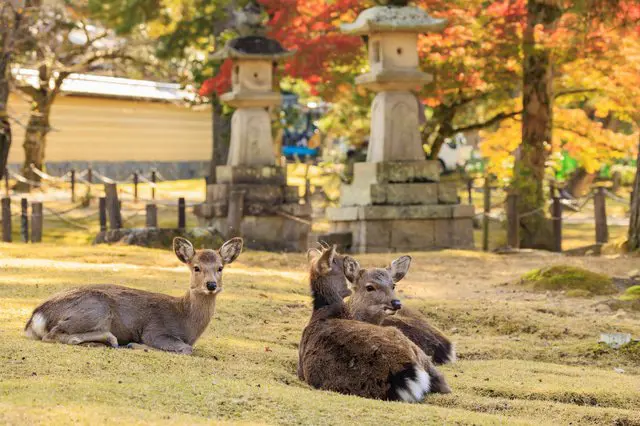
On weekdays during peak hours and on holidays during the day, there is one train per hour on the Karasuma Line that directly connects to Kintetsu Nara Station.
Even if there are no direct trains, transferring at Takeda Station is not troublesome. So, even if you are in Kyoto and suddenly feel like feeding the deer in Nara, you can just go for it!
Timetable for the Karasuma Line subway from Kyoto Station to Kintetsu Nara
13. Tozai Line: Connects to the Keihan Keishin Line for Hamaotsu Station in Shiga

Every hour, one to three trains on the Tozai Line provide direct service to Hamaotsu Station in Otsu City, Shiga Prefecture.
This convenient route allows for various activities like visiting the cherry blossom spots at Miidera Temple in spring, enjoying water activities on Lake Biwa in summer, or transferring to Ishiyamadera Temple where Murasaki Shikibu stayed. This area is great for a day trip from Kyoto.
Read also
Enjoy Exploring Kyoto
Kyoto's bus routes are well-developed, often causing people to overlook the convenience of the subway, which can save you from the hassles of traffic congestion and help you manage your time better, especially when rushing through your itinerary.
Next time you visit Kyoto, why not try exploring Kyoto to the fullest using the convenient Kyoto subway system?
I used to live in Japan and managed to conquer 78 out of the 100 famous castles and 12 existing castle towers in 8 years. As a history enthusiast, I also have a passion for baseball and Japanese dramas, which have driven me to visit all 47 prefectures. I hope to convey not only the scenery of Japan but also more of its culture and way of life.













































![[JR KYUSHU HOTEL Blossom Oita] A hotel directly connected to Oita Station - A comprehensive guide to access!](https://resources.matcha-jp.com/resize/720x2000/2025/10/23-247814.webp)
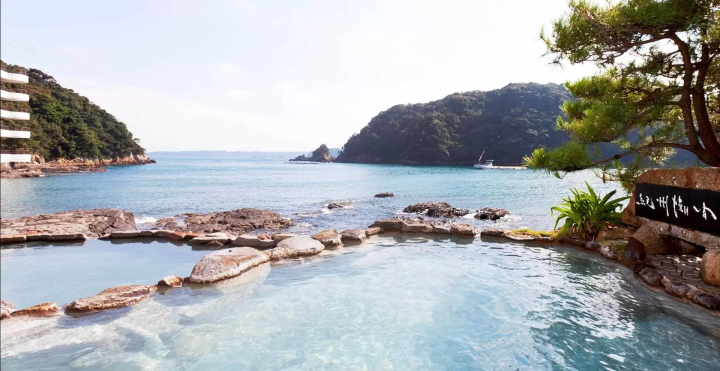
![Deep dive into Japanese brands! A tour of famous leather shoe stores with GENSEI & Nin [Harta Edition]](https://resources.matcha-jp.com/resize/720x2000/2025/12/18-253277.webp)
